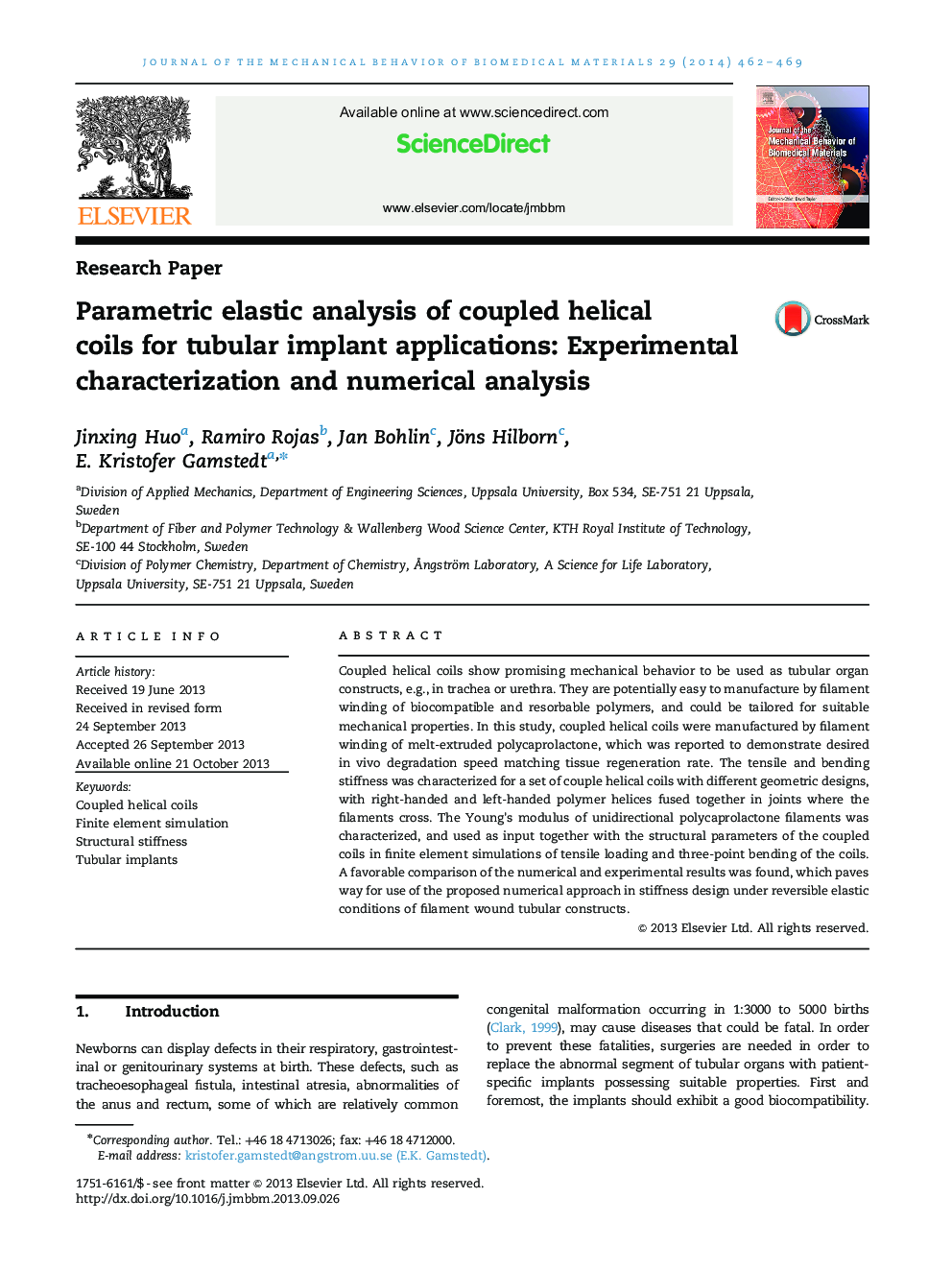| Article ID | Journal | Published Year | Pages | File Type |
|---|---|---|---|---|
| 7209147 | Journal of the Mechanical Behavior of Biomedical Materials | 2014 | 8 Pages |
Abstract
Coupled helical coils show promising mechanical behavior to be used as tubular organ constructs, e.g., in trachea or urethra. They are potentially easy to manufacture by filament winding of biocompatible and resorbable polymers, and could be tailored for suitable mechanical properties. In this study, coupled helical coils were manufactured by filament winding of melt-extruded polycaprolactone, which was reported to demonstrate desired in vivo degradation speed matching tissue regeneration rate. The tensile and bending stiffness was characterized for a set of couple helical coils with different geometric designs, with right-handed and left-handed polymer helices fused together in joints where the filaments cross. The Young's modulus of unidirectional polycaprolactone filaments was characterized, and used as input together with the structural parameters of the coupled coils in finite element simulations of tensile loading and three-point bending of the coils. A favorable comparison of the numerical and experimental results was found, which paves way for use of the proposed numerical approach in stiffness design under reversible elastic conditions of filament wound tubular constructs.
Related Topics
Physical Sciences and Engineering
Engineering
Biomedical Engineering
Authors
Jinxing Huo, Ramiro Rojas, Jan Bohlin, Jöns Hilborn, E. Kristofer Gamstedt,
